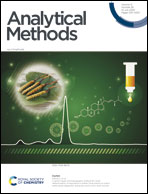Thermal desorption part 1: introduction and instrumentation
Abstract
The past 30 years have seen increasing availability of methods and equipment using thermal desorption for the measurement of airborne pollutants. These methods: offer greater sensitivity than methods using solvent desorption; are more amenable to automation; and, are better suited to mass spectrometry (MS)-based detection. The greater sensitivity offered by thermal desorption means it is well suited to the analysis of samples collected through diffusive sampling with the additional benefits that this offers. This Technical Brief informs both analysts and less technically aware users of the capabilities and limitations of thermal desorption equipment and measurement methods.

- This article is part of the themed collection: Analytical Methods Committee Technical Briefs

 Please wait while we load your content...
Please wait while we load your content...